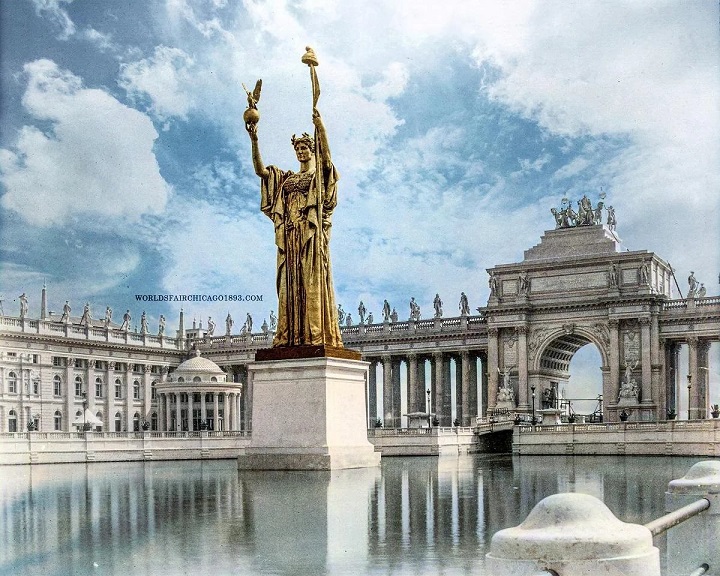Story shared here by permission of Culture Critic on X.
From here.

This is what Chicago was supposed to look like.
It looked this way during the 1893 World’s Fair – one of the most monumental events in American history.
The 19th and 20th century expositions were mighty celebrations of human achievement, congregating people from around the world to showcase leaps forward in culture and technology. Expos still take place today, but they declined in appeal after WW1.
The most impressive of all was the first exposition in Chicago. Some 27 million people attended over 6 months, when the city’s population was only 1 million and visitors did not have the luxury of air travel.
The fair was dedicated to the 400th anniversary of Columbus’s arrival in the Americas – a fitting moment to celebrate the onward march of civilization, during a time when the cultural and geopolitical torch was passing from Europe to the New World. Upstaging the extravagance of the previous fair in Paris, during which the Eiffel Tower was unveiled, was paramount.
In just two years (and without power tools), some 200 neoclassical buildings were erected in and around Jackson Park. Dubbed the “White City” for its gleaming façades, it far exceeded the grandeur of previous events. The structures were spread around a system of artificial lagoons and waterways, on which visitors zipped around on Venetian-style gondolas.

Most structures were built from a mixture of plaster, cement and jute, and intended to be temporary – which is why few remain today. The Palace of Fine Arts is still standing, but this was one of few built primarily from brick. Inside, representatives from 46 different countries exhibited their achievements in technology, science, industry, and the arts.
1893 was also a glimpse into the future – it was the first exposition lit solely by electricity, and most Americans had yet to witness the new technology. In a triumphal moment, President Cleveland switched on the power at the opening of the fair, bathing the White City in light at the push of a button.
The 65-foot “Statue of The Republic” (pictured) was the crowning monument, unveiled from drapery that was hoisted away when Cleveland hit the button. It was an allegory of American Exceptionalism – an eagle perching atop a globe in its right hand (suggesting the nation’s supremacy) and a staff topped by a Phrygian cap in its left (a symbol of liberty from antiquity). At the time, it was the largest statue ever made in America.
After the fair ended and most of its structures dismantled, the wonderful colossus was ordered to be destroyed because its gold-gilded exterior was beginning to wear. Apparently too costly to maintain, it was razed in a secret ceremony. The statue you see in Jackson Park today is a smaller, 24-foot replica.

